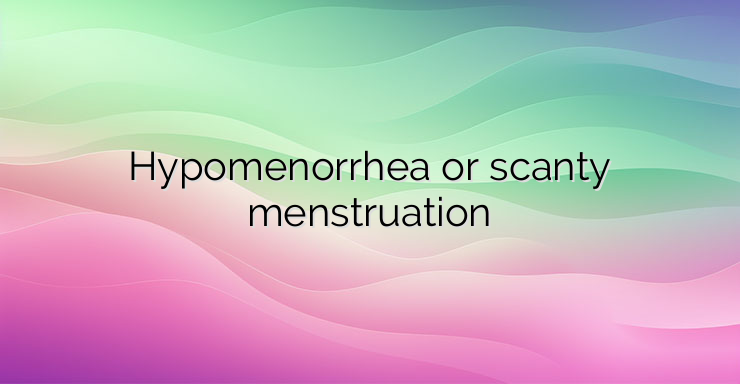Hypomenorrhea is the medical term for light periods or scanty menstrual flow. For reference, during a normal cycle, a woman typically loses between 40-60ml of blood per cycle. Women with hypomenorrhea lose less than 30 ml per cycle. Because of the small amount of bleeding, it can be difficult for women to distinguish between light bleeding and another menstrual disorder, namely spotting between periods. However, it is important to note that these are two different conditions. There are no other distinct symptoms of hypomenorrhea except one or more of the following characteristics: Scanty flow that remains constant throughout the period; Menstruation that is shorter than three days; Bleeding may look like spotting. It should be noted that scanty menstrual periods are a symptom of a hidden imbalance in the body. As such, they may be accompanied by other cause-specific symptoms, including: Hot flashes; Acne; Headache; Digestive problems; Mood changes; Fatigue. What can cause very light menstrual bleeding is in most cases directly or indirectly related to the menstrual cycle. A hormonal imbalance in the body that disrupts the menstrual cycle can be due to several reasons. Scanty menstrual bleeding is usually observed during various stages of a woman’s life, in which case they are not a signal of any abnormalities. These include: Perimenopause. As menopause approaches, the ovaries decrease hormone production, leading to irregular cycles, including scanty menstrual flow. Pregnancy. Light bleeding during pregnancy can also be confused with implantation bleeding, which occurs about seven to ten days after ovulation. Breastfeeding. It is common for breastfeeding women to have scanty menstrual bleeding until hormones return to normal after childbirth. Puberty. The first few cycles in a girl’s life are likely to be very sparse, often characterized by only light spotting. Light periods can also be the result of certain diseases or bad lifestyle habits, including: Polycystic ovary syndrome; Thyroid disease; Insufficient body fat; Eating disorders; Strenuous exercise; Prolonged severe stress; Absence of ovulation (anovulation); Taking contraceptives; Anemia as a result of malnutrition; Asherman syndrome. Occasional scantier menstrual periods are usually not a cause for concern, especially when they are present during the natural phases of a woman’s development. However, hypomenorrhea due to unusual reasons can have negative consequences for a woman’s health. Untreated thyroid diseases, polycystic ovary syndrome, severe stress and other conditions are closely related to problems with ovulation, including its absence and infertility. As such, women suffering from hypomenorrhea may experience difficulty conceiving or maintaining a pregnancy.Other complications of having scanty periods can arise from the progression of the conditions that caused them in the first place. This can result in further damage not only to a woman’s reproductive health, but also to her physical and psychological well-being. References: 1. American College of Obstetricians and Gynecologists. (2018). Perimenopausal Bleeding and Bleeding After Menopause. https://www.acog.org/Patients/FAQs/Perimenopausal-Bleeding-and-Bleeding-After-Menopause?IsMobileSet=false 2. Cleveland Clinic. (2017). Asherman’s Syndrome. Retrieved February 18, 2020 from https://my.clevelandclinic.org/health/diseases/16561-ashermans-syndrome 3. Comparative Hematology International. (2001). Secondary Amenorrhoea: Nutritional Anemia a Cause or Reason. Retrieved February 18, 2020 4. Eunice Kennedy Shriver National Institute of Child Health and Human Development. (2017). What are the common treatments for menstrual irregularities?


Leave a Reply